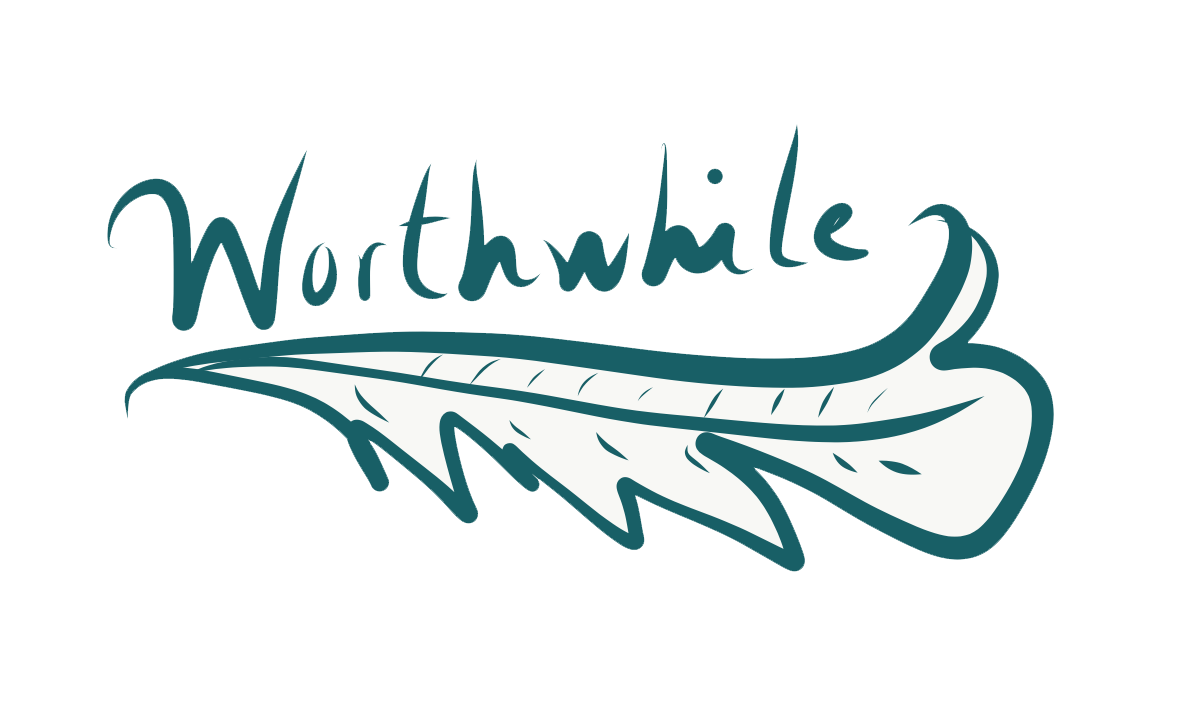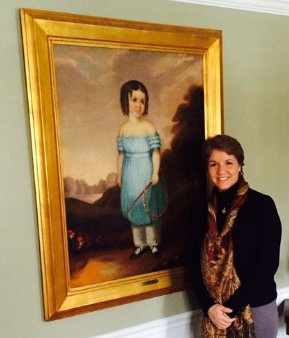A Conversation with an Art Restorer: Anabela Ferguson of Brush Strokes Fine Art LLC
Sarah Reeder recently sat down with Anabela Ferguson, owner of Brush Strokes Fine Art LLC in Springfield, Virginia.
SARAH REEDER: You own and operate your own art restoration business, Brush Strokes Fine Art LLC. What sort of restoration services do you provide for your clients?
ANABELA FERGUSON: Mainly I do oil restorations, acrylics, tempera, watercolor, paper restoration, digital photography restoration, and some prints such as lithographs. I follow up with cleaning, relining, re-stretching canvases, inpainting, and framing if needed.
SARAH REEDER: How did you first start out in the fine art restoration field? How did you initially find out about art restoration as a career and decide you wanted to pursue it?
ANABELA FERGUSON: Art has always been a part of my life. I am an artist, and I come from a lineage of artists. As an adult, I became interested in fine art conservation through researching how to preserve my grandfather’s paintings, and that led me down a path of many years of self-taught study and mentorship with restoration professionals, and eventually to my own firm.
Anabela Ferguson of Brush Strokes Fine Art LLC
SARAH REEDER: Many of us have images of art professionals based on film and television. I usually have to counter the popular image of an appraiser as someone who walks up to an object and starts spouting off a five-minute monologue about it without doing any research. An art restorer is usually shown as someone hunched over a painting wielding a Q-tip. How accurate is this popular media depiction of art restorers? Are there any major misconceptions you’d like to correct for our readers?
ANABELA FERGUSON: Most people have never met an art restorer face-to-face because customers typically seek restoration services from a gallery or museum who send out the work to a third party. I am actually quite unique in the field since I work one-on-one with all of my clients for their art restoration and conservation needs. People easily reach me through my website, and we discuss each project individually and all the steps to preserve their artwork by appointment before beginning the art restoration.
Like proper appraising, restoration takes time. For instance, an oil repair can take anywhere between four weeks to four months depending on the extent of conservation needed and the complexity of the piece. To preserve an aged piece requires cleaners to be tested from the mildest to the most powerful strength of cleaner. These techniques usually take twenty-four hours for every color hue present in the painting and cleaner used. The reason why I wait a full day for each test is to make sure the cleaners are doing their job and are safe to use. People are right to assume that it’s a meticulous job.
SARAH REEDER: Would you mind walking us through your process in a typical restoration assignment?
ANABELA FERGUSON: Once I meet with the client, I sit down with him and the usual process that I go through is to have him always view what I am seeing in the artwork together with me once I evaluate the piece. In a darkened room, I use 10X magnifying glasses and a UV light for conservation to study the deterioration of the surface and the backing of each piece from oil paintings to works on paper. Once I do that, I have the client also try the 10X magnifying glasses to see everything that I am pointing out. I like for clients to feel completely involved and not have a “blind eye” as the owners of the art.
Closely studying a work with magnifying glasses in addition to a UV light can be a real eye-opener. You can find more damage than just a green or yellow hue from aged varnish. I search for signs of any mold deterioration, chipped paint, scratches, holes, and discoloration from linseed oil. Once I do that, I give the estimate to the client who can choose which services to have performed.
I also always offer framing services at a discounted rate of 20% over wholesale cost as well. Many take advantage of the cost being so low, knowing it wouldn’t make sense to not reframe it.
SARAH REEDER: In addition to Brush Strokes Fine Art LLC, you mentioned that you are also a fine artist in your own right. Do you find that your own studio practice aides you when inpainting of areas of paint loss is required in a restoration assignment? And do you feel like your creative thinking is different when you are in “restoration mode” rather than “personal painting mode?”
ANABELA FERGUSON: Absolutely. Each role is a different frame of mind, such as when I restore a client’s work, when I am painting my own pieces, or when I am cutting wood for a custom framing job.
SARAH REEDER: Would you mind talking a bit about your workshop and how much work goes into maintaining your inventory of necessary chemicals and tools?
ANABELA FERGUSON: I have a studio that is thirteen-and-a-half feet by thirty-six feet with ceilings that are twelve feet high. On one end I keep a top-of-the-line Mitsubishi air conditioning and dehumidifier wall unit, on the other end I have a Frigidaire dehumidifier only that extracts the humidity from the studio through a hose.
Many visitors are struck by how high-tech and complicated the tools and equipment that fill the space —it is practically an entire chemistry laboratory of specialized solvents and other materials.
I find that fall through spring are the easiest months to work and the summer months are the hardest due to the increased humidity. It becomes a bit of challenge balancing keeping humidity levels low and maintaining safe ventilation practices here on the muggy East Coast of the United States.
SARAH REEDER: One of the things I most enjoy about appraising is that I’m constantly being presented with opportunities to learn new things and increase my knowledge—I imagine the fine art restoration field is very similar. What are some areas where you particularly enjoy keeping up with new developments?
ANABELA FERGUSON: I especially enjoy figuring out which cleaning solution products needed. Each assignment varies depending on the chemical makeup of the paint, and I am constantly researching and determining the best combination of solutions for the job at hand.
Although in truth, there have been panic attacks when I realize I’m running out of a solution I need. It is extremely challenging to maintain a current inventory of the many solvents I use, most of which are quite expensive.
SARAH REEDER: Some of those chemicals can be quite dangerous to work with. What steps do you have to take to protect your health in the restoration studio?
ANABELA FERGUSON: I wear a respirator and change the filter regularly, have a specialized window fan that extracts the air inside to outside, have several area fans running constantly, and keep the humidifiers going to control the humidity levels at 55% humidity or below. I also use nitrile gloves in the studio so that the chemicals won’t touch my skin and wear a white lab coat so they won’t splatter back on me and damage my clothes. And I have goggles over my glasses to protect my eyes for working with liquid solutions.
SARAH REEDER: What are your favorite types of assignments? What sort of projects do you find most challenging?
ANABELA FERGUSON: My very favorite type of assignments are portrait commissions from private collectors. Painting a subject of my own choosing for display in exhibits is my second favorite type of assignment.
A recent challenging project was restoring a painted family portrait and then making seven prints of the restored painting for family members and embellishing them with pigment so that they looked exactly like the original. It’s difficult to do this for even one embellished print, but seven of them was a new record!
SARAH REEDER: One of the elements I most enjoy about your business is how you have created a YouTube channel with educational videos of your projects and techniques. It is so helpful to be able to watch the process, and you’ve been kind enough to allow Worthwhile Magazine™ to share one of your videos embedded here with our readers. How did you first get started with the innovation of filming your process? How can our readers find and subscribe to your YouTube channel?
© Anabela Ferguson 2018, used with permission
ANABELA FERGUSON: Yes! I like how it’s a free resource, and I discovered the possibility of posting process videos on YouTube through my Google+ business account. I really enjoy this online medium as a way to visually demonstrate my work.
People can subscribe to my YouTube channel here: https://www.youtube.com/channel/UCE_9ypldX00um6I5LFEz_VA
SARAH REEDER: In addition to Brush Strokes Fine Art LLC and your fine art studio, you are deeply passionate about entrepreneurship and small business, particularly women in business, which is an interest that many of us fellow small business owners share. Do you have any wisdom you would like to share with our readers gleaned through your years of successful entrepreneurship?
ANABELA FERGUSON: Once you learn how you are going to sustain yourself with a business, you need to teach yourself through free or mentorship resources on how to market yourself before you can sell your product. Part of it is using free social media without combining it with personal accounts and keeping it straightforward for your business. Personal and political views should be avoided on these brand accounts as you might exclude a percentage of clients who could benefit from your services. Study an equivalent to your business that is already established for two decades or more and use their model as a tool to contemplate how you want to develop your own business growth based on what you like and don’t like about their example. Find in your business what nobody else has and nourish those unique elements. Automatically, this step will help the business grow.
Many thanks to Anabela Ferguson for chatting with Sarah. You can learn more about her business by following the links below.
Website: http://anabela-artist.com
Linkedin: https://www.linkedin.com/in/anabelaferguson
Angie’s List: https://www.angieslist.com/companylist/us/va/springfield/brush-strokes-fine-art-llc-reviews-7473757.htm
You can also use the search keywords “Brush Strokes Fine Art LLC” to view all of the different brand social media accounts, videos, and press.
© Worthwhile Magazine 2018



